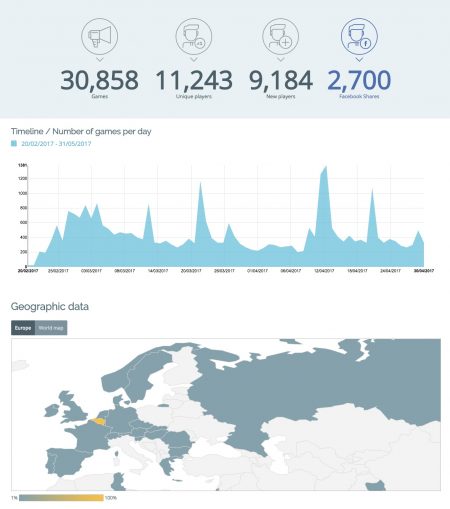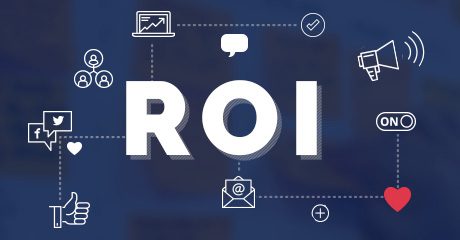How to measure the ROI of your marketing campaigns?
“What’s my return on investment?” In other words, what kind of results do my campaigns deliver? This is the most common question marketers have about their actions, be it a booth at an event or a weekly newsletter. The problem is that everyone talks about it but no one really knows how to do it… Measuring marketing is hard. This article is all about how marketers can measure the effectiveness of their digital campaigns. If you want to know by where to start, this article is for you!
What does ROI mean again?
In simple terms, the ROI is the efficiency of an investment, of a marketing action. It measures the amount of return on an investment, relative to the investment’s cost. The first thing to consider are your goals: in order to understand what your ROI is, you need to know what you expect to get back from your digital marketing campaign, what its purpose is. Do you want to generate leads, to close new customers, to re-engage existing ones? You will need to set realistic goals for your marketing campaign before you even think about tracking marketing ROI and set Key Performance Indicators (KPIs) related to those goals. Don’t worry! Our team of experts is here to help you monitor KPIs based on your own marketing and data strategic objectives.
E.g. A company wants to reach the milestone of 1,000 unique visitors per day on its website. After implemented several concrete actions, the company verifies if its actions have a good return (if they achieved the KPI of 1000 daily visitors) according to the initial investment.
Depending on what your business needs right now, metrics for measuring your ROI can differ. Here are some of the main types of KPIs marketers measure:
- Based on general performance – traffic, leads, opt-ins, time spent, popular pages, top content , bounce rate
- Based on traffic sources – direct or referral traffic, organic search, campaign traffic, newsletter
- Based on campaigns – click throughs, conversions, conversions rates, bounce rates
- Based on channel – website, blog, social media, search engines
- Etc.
How to determine your ROI?
Use built-in measurement tools. A lot of digital tools you can find these days provide you with metrics and figures for campaigns, which is a good place to start. For example, Qualifio offers a performing statistics module to help you to assess and track the success of your marketing campaigns. You will find all the statistics and details of your campaign (number of games, data of all participants, opt-in rate, social media likes and shares, etc.) and the possibility to export them into an Excel file or to push it automatically to your database.


All those hard data tell you where your digital marketing efforts are successful or what your audience cares about and where you need to make changes or spend more money. Qualifio is measuring and tracking everything in real time, no need to wait till the end of your campaign to monitoring your goals, your KPIs and other information. This will helps you to get the most accurate calculations of the ROI.
Other ways marketers can measure performance and ROI
There are several ways to calculate the ROI. The simplest formula anyone can use goes like this: (Profit – Marketing Investment)/Marketing investment, so in more basic terms: ROI = (Gain/Cost) / Cost
However, there is a more accurate way to calculate the ROI of your digital marketing campaign. This formula includes another component: the Customer Lifetime Value (CLV). It’s simpler than you may think. You can find your CLV by knowing the total net profit your company makes from any given customer, so the revenue a customer will generate during their lifetime. Somehow, this metric predicts the future. This Kissmetrics graphic covers how to calculate this value and how to use it in your marketing budget:
Source: How To Calculate Lifetime Value
The final ROI formula that integrates the CLV element goes like this:
ROI = Total Lifetime Value – Marketing Investment (annual spend)/Marketing Investment
In conclusion, it’s difficult to run any kind of marketing campaign without measuring the ROI that helps you to know what is efficient and what’s not. To do so, you need to keep a close eye on your hard data and analyse them to adjust and build marketing strategies that keep customers engaged and increase conversions.
Don’t forget that the best part about digital marketing is that everything is measurable, so you can make sure that your efforts are paying off. Put simply, checking in on your ROI can give you the knowledge you need to make your marketing more efficient!









